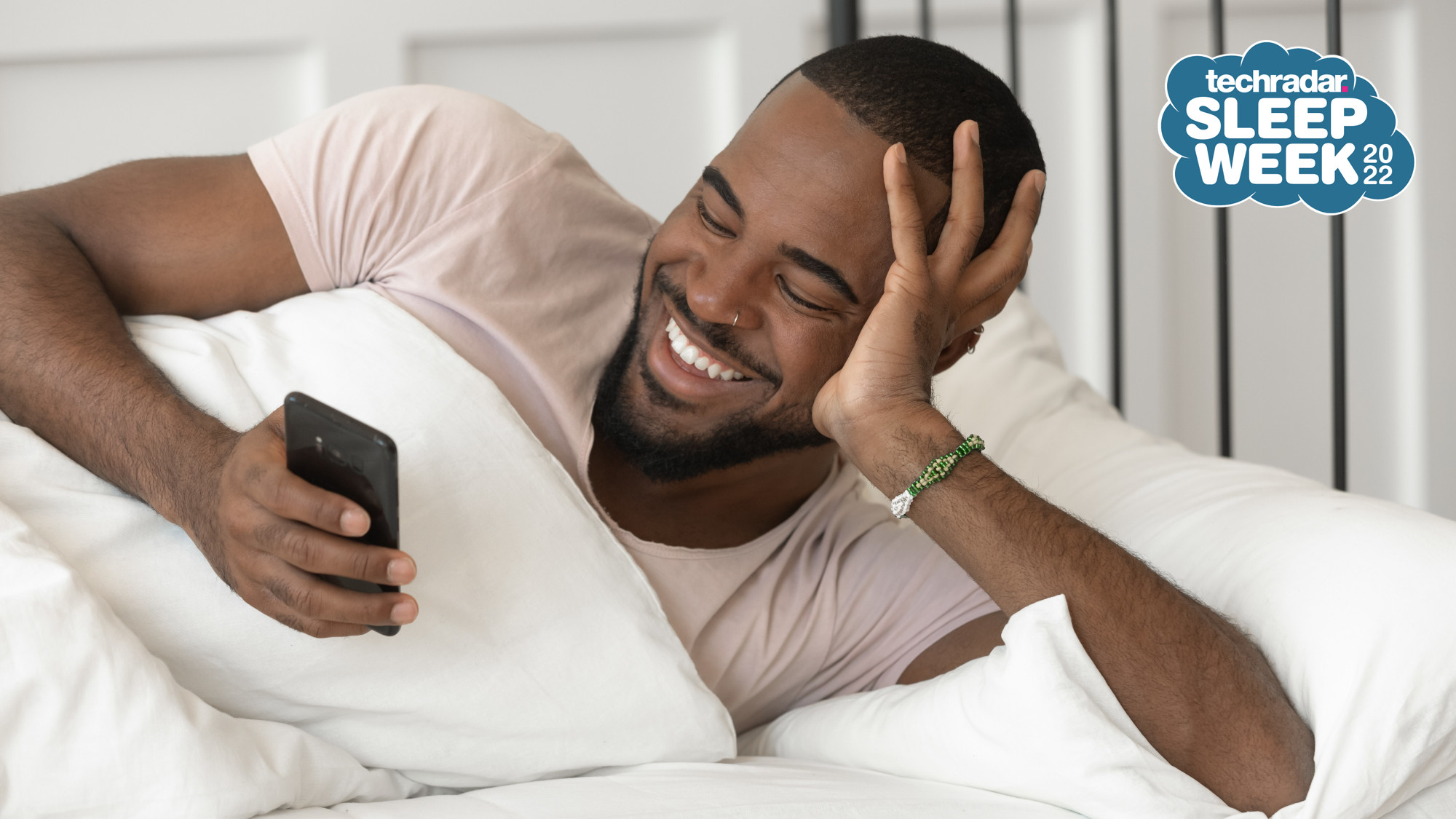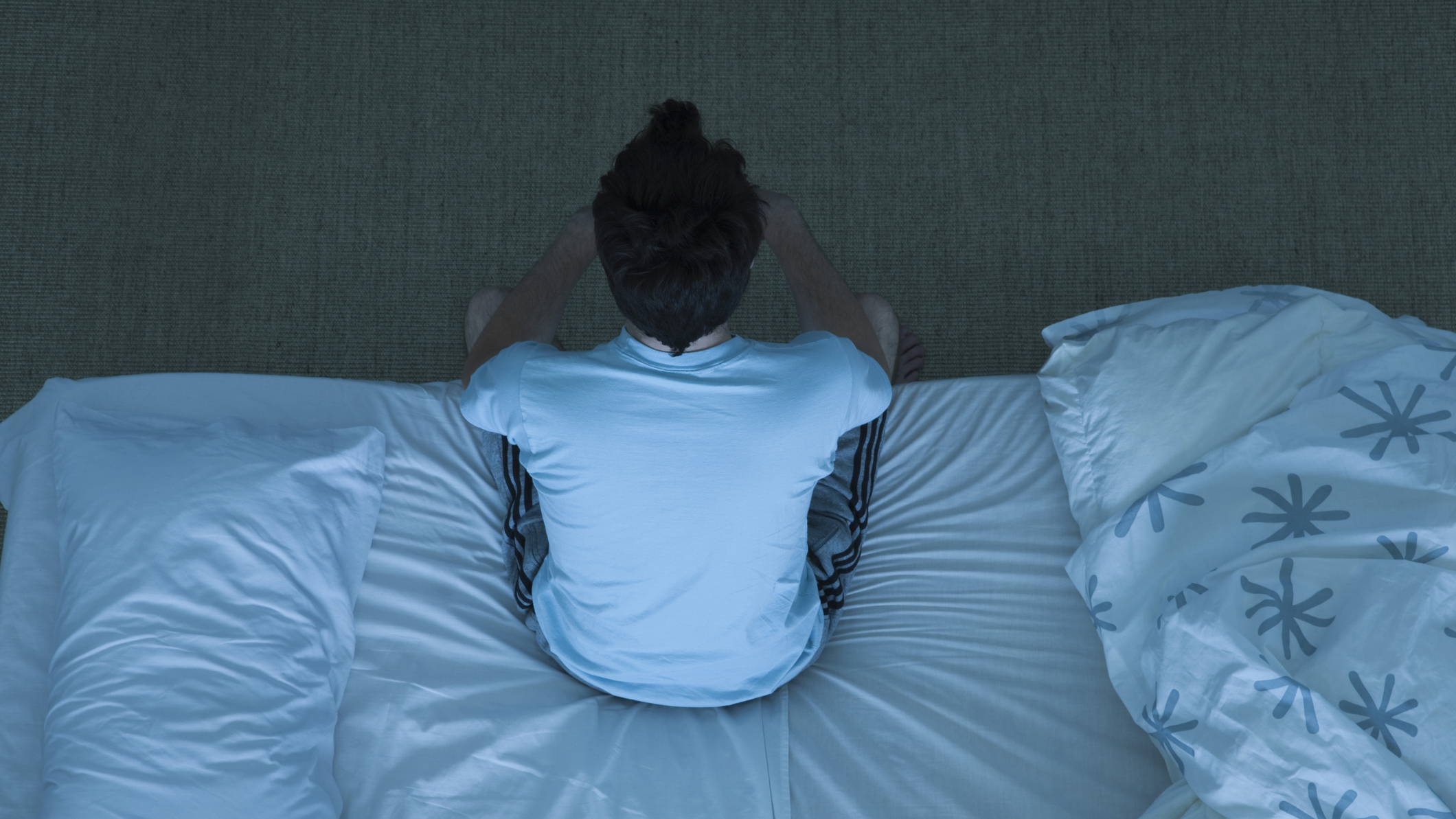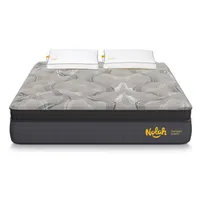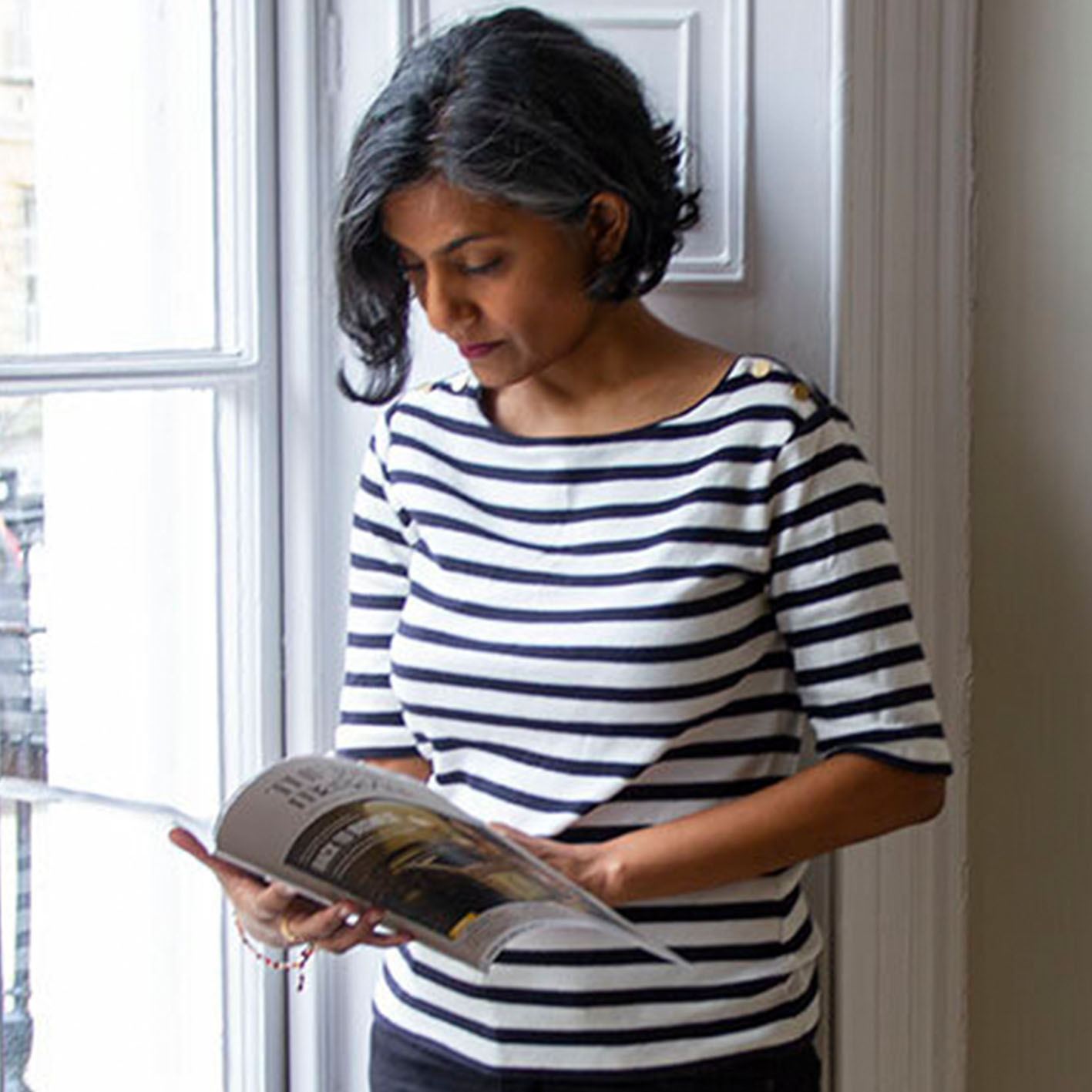World Sleep Day: 16 sleep tips, techniques and hacks to try tonight
Learn how to sleep better with these popular techniques, tips and hacks shared by sleep and wellness experts

Today is World Sleep Day 2022, and if you’re using it as a springboard to learn more about how to sleep better this year and beyond, we have some brilliant sleep tips and techniques to share with you right here.
These range from getting a feel for just how much shut-eye you need, based on your age and activity levels, to understanding what might be keeping you awake at night. Oh, and how, for the best shot at quality sleep, strenuous exercise is best done before 6pm (not always do-able, we know).
We’ve also rounded-up some simple yet powerful sleep hacks from experts in the field of wellness and slumber, including how something as simple as getting outdoors first thing will help you fall asleep faster at night.
Ready to learn how to sleep better than ever? Then let’s get started…
1. Understand your current state of sleep
In order to sleep better, you first need to know how much sleep you’re getting each night, and what quality of sleep you’re getting. A good way to do this is to invest in one of the best sleep trackers, whether it’s a wrist-based tracker or one that slips under your mattress. While we wouldn’t take the results as gospel, they can be a handy way to gain more insight into your shut-eye and where it could be improved.
2. Know how much sleep your body needs
One of the most famous sleep myths is that we each need eight hours’ sleep a night, but this simply isn’t true. Seven to nine hours is what’s recommended, with your age, health, daily activity levels and even your work impacting how much shut-eye you need.
As Dr Lindsay Browning, chartered psychologist and neuroscientist told us when we spoke to her about how much sleep do you need: “The more physically active we are, the more we need to repair our bodies,” and that, “When you sleep you produce a growth hormone and your body can physically grow. So newborn babies will need tons more sleep than adults. As we get older we stop growing, so we don’t need as much sleep.
Sign up for breaking news, reviews, opinion, top tech deals, and more.
3. Wear socks to bed
Viral TikTok star Dr Jess Andrade shared an easy sleep hack explaining that, “wearing socks in bed makes your feet warm, which opens up the blood vessels that cool the body down. The body being cool tells the body that it’s time for bed. People who wear socks to bed fall asleep faster.”
@doctorjesss I wear socks to bed so don’t come at me im not weird
♬ presleywalker - PresleyWalker
4. Know your chronotype
As anyone who suffers from sleep issues knows, what works for one person might not work for another. However, if you know your chronotype, then you can work out what’s best for you. But what is a chronotype? There are four of them, and they govern your body’s natural inclination to be awake or asleep at certain times of the day and night.
Why is knowing your chronotype important to your sleep? As Dr. Michael J. Breus, a prominent American sleep doctor, explains on his blog: “Your chronotype doesn’t just affect your sleep, it affects all aspects of your day to day life… If you’re experiencing poor sleep quality despite getting a full night’s sleep, then it’s quite possible that you are working against your chronotype.”
Chronotypes are broken down into ‘Lion’, ‘Bear’, ‘Wolf’, and ‘Dolphin’ and once you know your chronotype, you’ll sleep better at the right time for you, and you’ll be more productive during the day.
5. Get outdoors early in the morning
Back to Dr Browning... The neuroscientist also told us that exposure to early morning light is important for sleep at night. “As biological creatures, we’re designed to see sunshine during the day, so we should go outside at lunch to tell our brains it’s the middle of the day. Then, when evening comes, our brain can say, ‘OK, now we need to sleep’.”
There is no substitute for actual daylight, but if you can’t get outdoors early in the day, throw your curtains open wide and flood your room with daylight. On darker mornings, rise and shine with one of the best wake up lights.
6. Go to bed between 10-11pm
From a practical point of view, going to bed between 10-11pm makes sense, as most adults require seven to nine hours’ sleep a night. However, Dr Sophie Bostock (aka ‘The Sleep Scientist’) explores the idea that this is also the healthiest time to sleep.
Dr Bostock references a study where researchers analysed the bedtimes of 88,000 people in the UK who wore a sleep tracker for seven days to record the timing and duration of their sleep. According to Dr Bostock, ‘the risk of heart disease was lowest for those people with a bedtime between 10 and 11pm.’
7. Restless legs? Try elevating them
Back on TikTok, fitness influencer Justin Agustin shared a hack to help people enjoy better quality sleep. Follow his pre-bedtime stretch routine to get fully relaxed, but pay attention to the last tip: elevate your legs.
You can do this over a couple of pillows or a bolster cushion, but the idea is to improve circulation by raising your legs, thus draining the fluid and easing the symptoms of restless legs, which can disrupt your sleep.
8. Keep the same sleep and wake times
Professor Matt Walker, ‘The Sleep Diplomat’ and the author of Why Sleep Matters, is full of excellent sleep tips and neuroscience-backed insight. In his Ted talk Why Sleep Is Your Superpower, Walker dishes out this classic sleep tip: “Go to bed at the same time, wake up at the same time.”
And he means come rain or shine – whether it’s the weekends or you’re on holiday, you still need to wake up at the same time. Why? As the professor explains, it will “anchor your sleep and improve the quantity and quality of that sleep.”
9. Create a relaxing bedtime routine
As you probably know, consistency is the key to better sleep – this means going to bed at the same time every night and having a bedtime routine that relaxes your body and mind ready for sleeping. The more consistent you are with your routine, the more powerful this ‘sleep cue’ will become and the faster your brain will recognize it.
10. Practice 4 7 8 breathing
This tried-and-tested method is a gamechanger not just for insomniacs but for anybody who has a racing mind during the day too.
In a short video, Dr Andrew Weil explains how the 4-7-8 breathing technique can help relax the body for sleep.
All you do is: breathe in through the nostrils for four seconds, hold the breath for seven seconds, and breathe out through pursed lips for eight seconds. Repeat for four rounds to help trigger the brain into relaxation, and you’ll soon be drifting off to sleep. We guide you through it in our piece on the 4 7 8 Sleep Method.
11. Keep your cool
Continuing with the excellent advice from Professor Matt Walker’s superb Ted talk, Why Sleep Is Your Superpower (which has attracted over 15 millions views), he explains that “your body needs to drop its core temperature by about two to three degrees Fahrenheit to initiate sleep and to stay asleep.” The best sleep-friendly temperature for your bedroom is around 65 degrees Fahrenheit/18 degrees Celsius.

12. Can’t sleep? Then get out of bed
If after 25 minutes you can’t sleep, get out of bed and do a gentle activity in another room, such as light housework or reading. Essentially, try to avoid lying there and worrying about how you’re not sleeping.
James Wilson The Sleep Geek tells us that, on those nights when sleep just isn’t happening, “Getting out of bed and starting your relaxing routine again means you’ll eventually get drowsy.” It sure beats staring at the ceiling for an hour.
13. Avoid strenuous exercise after 6pm
This will divide opinion, as many of us don’t get the chance to hit the gym until after work, meaning this is normally when we get in our most intense workouts. But Dr Irshaad Ibrahim, founder of the London Sleep Centre, explains in a short video that a good sleep routine is key to better sleep, and includes exercising before 6pm.
“Exercising in the evening can lead to excessive stimulation and result in the adrenaline system being in overdrive, hence difficulty in falling asleep.” Dr Ibrahim says. While we appreciate this expert advice, we’d also add that it depends on how your body responds to exercise, so do what feels best for you.
14. Drift off with John Legend
The singer has teamed up with meditation and mindfulness app Headspace to create the John Legend Sleepcast, featuring different playlists and soundtracks designed to help you relax and fall asleep easier.
You can try it for free, and if that doesn’t do it for you, then there are plenty of other sleep apps to load up on. We’re fans of the Calm app’s Sleep Stories (read our Calm review), a series of bedtime stories for adults to help you switch off your busy brain, relax into the covers and drift away.
15. Give your mattress the once-over
There are countless reasons why your bed could be causing you to sleep badly – it could be too hard, too soft, too warm, too cool, or just not big enough. But, ultimately the best mattress is the one that suits you right now, so if you have lost or gained weight, or have new health problems such as a bad back, it could be time to get a new mattress that will help you recover.
Alternatively, you could invest in a good mattress topper to add a layer of firmness, softness, or cooling – whatever it is you need for better sleep.
16. Top up on tryptophan
Tryptophan is an amino acid found in certain foods and is needed to make melatonin, the hormone we need for sleep. Leading London-based nutritionist Rob Hobson recently told TechRadar that, when it comes to foods that help you sleep, cashew nuts are the number one snack.
"They are rich in magnesium that activates the parasympathetic nervous system, which is responsible for relaxation.” Hobson told us. “Magnesium also regulates melatonin, which guides sleep-wake cycles."
Save up to $750 on mattresses at Nolah Sleep
We’ve teamed up with Nolah to offer you an exclusive discount of up to $750 off memory foam and hybrid mattresses (with code TRNOLAH). Each model is made with cutting-edge mattress tech to help you sleep cooler and to relieve pressure on your back and hips. You’ll get free shipping and a 120-night trial too.
This article is part of TechRadar's Sleep Week 2022 (running from Sunday 13 to Saturday 19 March), a week-long celebration of all things slumber. We'll be bringing you proven techniques and tips to help you sleep better, and have rounded-up all the top-rated tech to transform your sleep.
Grace Franks is an experienced sleep and mattress writer who has written for our sister sites Tom's Guide and T3, among other brands. She's interested in organic and eco-friendly sleep products, and how good sleep can improve our general wellbeing. When not writing about mattresses, Grace loves reading, creative writing, and practicing yoga.

